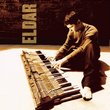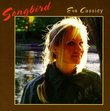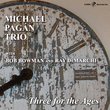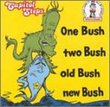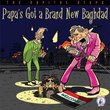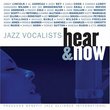| All Artists: Miles Davis Title: Live at the 1963 Monterey Jazz Festival Members Wishing: 7 Total Copies: 0 Label: Monterey Jazz Festival Original Release Date: 1/1/1963 Re-Release Date: 8/21/2007 Album Type: Live Genres: Jazz, Pop Style: Number of Discs: 1 SwapaCD Credits: 1 UPC: 888072303102 |
Search - Miles Davis :: Live at the 1963 Monterey Jazz Festival
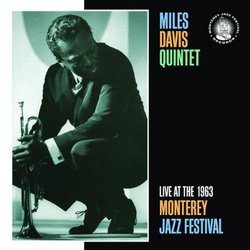 | Miles Davis Live at the 1963 Monterey Jazz Festival Genres: Jazz, Pop
LIVE AT THE MONTEREY JAZZ FESTIVALS is an outstanding new CD series of NEVER-BEFORE RELEASED performances by jazz icons recorded live at the world-renowned Monterey Jazz Festival; all recorded at the height of each arti... more » |
Larger Image |
CD DetailsSynopsis
Album Description LIVE AT THE MONTEREY JAZZ FESTIVALS is an outstanding new CD series of NEVER-BEFORE RELEASED performances by jazz icons recorded live at the world-renowned Monterey Jazz Festival; all recorded at the height of each artists' artistic powers. These are the inaugural releases of Concord Music Group and Monterey Jazz Festival's MJF RECORDS imprint. All selections are previously unreleased and feature never-before-heard releases culled from historic live archives. Profits realized by the Monterey Jazz Festival from this series will be re-invested into its ongoing jazz education programs. Don't miss these spectacular, rare and historic recordings! Featuring George Coleman, Herbie Hancock, Ron Carter, Tony Williams Similarly Requested CDs
|
CD ReviewsAbsolutely indispensable (shame on Concord for freezing it) Samuel Chell | Kenosha,, WI United States | 10/18/2007 (5 out of 5 stars) "This recording is so fresh and alive sonically and so rich and rewarding musically that forty-five years literally melt away upon hearing it. One doesn't know whether to express gratitude to the producers for releasing a recorded event of such historic significance and rare beauty, or outright annoyance at those responsible for sitting on it for all these years. In any case, it's music that could have been recorded yesterday, assuming a cast like this one could ever be reassembled. In some respects, this is but yet another example of what is known as Davis' "transition period" (1960-1964) between his "first great quintet," with tenor saxophonist John Coltrane, and "second great quintet," with Wayne Shorter. On this instance, the playing is good enough to make a listener wish the transition had lasted indefinitely. First, there was the fascinating contrast between Davis' free approach and reedman Sonny Stitt's systematic bebop vocabulary, then there was Davis' sophisticated urbanity contrasting with the musky, bluesy, unashamedly soul-baring tenor of Hank Mobley, and here it's the restless and searching Davis vs. the pure, open sound and "singing" approach of tenor saxophonist George Coleman. The fact that the band had been together only several months adds to the freshness and excitement of the performance--perhaps more so than anything that would follow during Miles' "acoustic" period. On the opening "Autumn Leaves" Davis, on harmon-muted trumpet, conducts a Hamlet-like, alternately meditative and morosely malcontent dialogue with his 23 year-old pianist Herbie Hancock who, quickly reacting to some hints from bassist Ron Carter, provides harmonic substitutions that momentarily reshape the tune's character. At the completion of the trumpeter's turn, Carter and 17 year-old drummer Tony Williams release the ever-mounting tension with a flowing 4/4 time-stream for the linear and lyrical melodic inventions of Coleman, who transforms brooding soliloquy into extroverted aria. During Coleman's solo, the interplay between Hancock and Williams is worth the listener's undivided attention in itself, as the pair will adapt a motif in the solo to a shared rhythmic pattern, which in turn redirects the soloist's constructions. A similar empathy and serendipitous coupling extend to a way-up-tempo yet strangely serene and flowing version of "So What." I've never heard a better interpretation of Victor Young's "Stella by Starlight" ever (and I've heard hundreds). The mysterious lady is seen through prismatic colors, with each soloist drawing an evocative portrait of varied colors and shifting moods, from ethereal and mysterious to teasing and saucy. I doubt if Hancock has ever played more sensitively, clearly living up to the school of thought that associates him with Bill Evans. The blues "Walkin'," taken at another torrid tempo, opens with a Williams' solo that challenges the blues form itself, while Carter goes to a half-time bowed solo that demonstrates the expressive possibilities attainable through the mathematical permutations of tempo. The overall sound is spacious yet up-close and vibrantly present, while every note is crystal clear, assuring the listener of catching each detail, from Hancock's delicate voicings to Williams' innovative, often surprising punctuations (in fact, the audio makes my CD copy of the later studio session "E.S.P." sound artificial and limited, the piano unlistenable compared to the one captured on this 1963 date. Moreover, everyone seems uncommonly committed to swinging and inventive melody-making. By the time of the Plugged Nickel sessions the group would play with a more self-conscious, calculated and cerebral approach to melody (don't give it away), harmony (invent the chords as you go) and time (let it shift, speed up and slow down midstream). For me this is one of the four most important releases of the new milennium, joining "Monk and Coltrane at Carnegie Hall," Clifford Jordan's "Glass Bead Games" and Bill Evans' last, heroic and glorious stand (collected on "Consecration" and "The Last Waltz"). At the very least, I doubt any knowledgeable follower of the music could disagree that this recording is an indispensable addition to one of the most distinguished canons by a major artist in 20th-century music." Great! H. Lim | Carlingford, NSW Australia | 09/11/2007 (5 out of 5 stars) " How many live recordings are there of Miles' group with George Coleman? Even confined to the Columbia releases there are "Miles in Europe", "My Funny Valentine" and "Four and More". And the set list here has no surprises. Yet it is well worth picking up this release even if you have all of these discs. The playing on this Moneterey concert is amazing, from all parties. Miles' soloes are long and energetic. I think this may be the best version of "Autumn Leaves" I've heard from this band, and George Coleman's solo on "So What" is full of vibrancy. In 1963 this was a new band, and you can feel the enthusiasm even when the band is playing such well-worn tunes. And in case you were wondering, this is NOT a bootleg release, it was released with the blessing of the Miles Davis Estate. The sound quality is fantastic! " Another Lost Treasure Finally Found! JoeyD | los gatos, ca | 09/23/2007 (5 out of 5 stars) "I wish to give a very special thanks to the Concord Music Group for releasing these once lost treasures from the Monterey Jazz Festivals. This is an outstanding new series of CD's featuring live, never-before released performances by many of the jazz greats who played at the famous Monterey Festival. I now own a half dozen of these recordings, and the sound quality couldn't be better.
This was some kind of quintet Miles had assembled back in 1963 with George Coleman (tenor sax), Ron Carter (bass), Herbie Hancock (piano), and a seventeen-year-old phenom named Tony Williams (drums). Miles was sitting on top of the jazz world at the time, and this recording is a prime example of why. His majestic, muted style is simply electrifying and it's also easy to see why he was consistently winning the Down Beat poll as the best jazz trumpet player of the year. The always traditional, conservative Coleman is solid throughout, nothing too spectacular, but then again, sans mistakes (which actually didn't appeal to Williams who hated the fact that Coleman's playing always sounded so perfect and mistake free. He actually preferred musicians who made mistakes, like playing out of key). Another reason this recording is so memorable and special are the extraordinary performances of Hancock and Williams. These guys were really out to prove themselves and Williams in particular, became the talk of the jazz world after this appearance. Just listen to him at the end of "Autumn Leaves" and tell me anyone could have done it better or sound as unique. And I just love Herbie, he and Miles always seemed to be on the same page and he just kills it on his swingin, smooth, sophisticated solo on "Stella by Starlight". However, these are just two small examples of this near perfect, live recording. All in all, this is a really nice suprise and one not to be missed. I had no idea it was going to be as great as it was, and can't recommend this one enough!" |

 Track Listings (6) - Disc #1
Track Listings (6) - Disc #1
